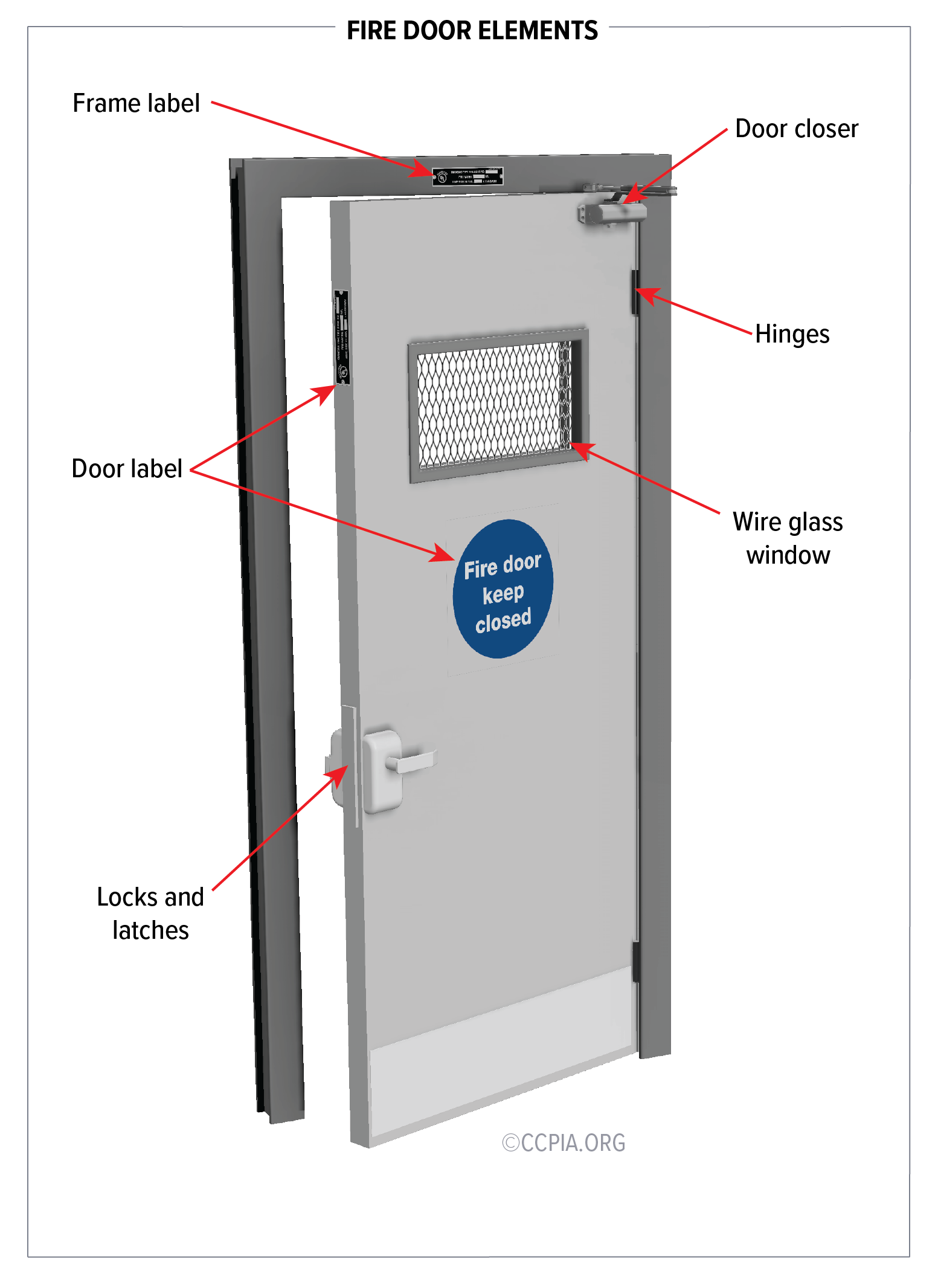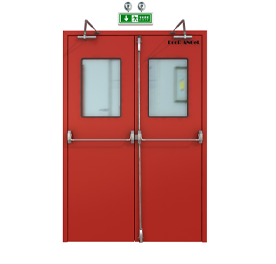A Comprehensive Overview to the Different Fire Door Kind Available
From the elegance and moderate fire resistance of wooden fire doors to the durable protection provided by steel fire doors, each kind brings unique benefits customized to specific environments. Glass fire doors not only offer important fire defense but likewise allow natural light to permeate, while composite fire doors use a balance of style versatility and efficiency.
Wood Fire Doors
Wood fire doors play a vital function in fire safety and security by compartmentalizing areas to stop the spread of fires and smoke. These doors are especially designed and rigorously examined to fulfill strict fire-resistance requirements, making them a reputable option for both household and business structures. Constructed from fireproof hardwood and treated with intumescent seals, wood fire doors can endure high temperature levels and preserve their structural integrity during a fire.
The effectiveness of wooden fire doors hinges on their ability to develop an obstacle versus fire and smoke, commonly ranked to sustain 30 to 60 mins of exposure. This delay is crucial, offering occupants with valuable time to evacuate and permitting emergency situation solutions to react better. Furthermore, wooden fire doors been available in various finishes and designs, which guarantees they can flawlessly mix with the interior appearances of any type of building.
Maintenance and regular examinations are important for ensuring the ongoing efficiency of wooden fire doors. This consists of checking the stability of the door, the functionality of the seals, and ensuring that the door shuts properly and latches firmly. By adhering to these techniques, wood fire doors can be an integral component of a comprehensive fire security technique.
Steel Fire Doors
While wood fire doors offer a mix of functionality and visual appeals, steel fire doors bring a various set of advantages to terminate safety services. Fire doors. Recognized for their effectiveness and remarkable resistance to extreme conditions, steel fire doors are a favored option in industrial and commercial settings where sturdiness and high performance are critical
One of the main benefits of steel fire doors is their amazing fire resistance. Built from galvanized or stainless steel, these doors can endure heats for extensive periods, providing crucial time for evacuation and emergency situation reaction. They are usually rated to endure fire exposure for approximately three hours, significantly improving the safety and security of passengers.
Steel fire doors additionally flaunt excellent toughness and sturdiness. Unlike wood counterparts, they are less at risk to warping, splitting, or various other kinds of damages with time, making certain lasting integrity. Additionally, they provide exceptional safety attributes, making them a suitable choice for areas needing stringent protection versus unauthorized access.
The upkeep demands for steel fire doors are somewhat low. Their resistance to insects, dampness, and various other environmental elements further expands their life-span, making them an economical remedy for long-term fire security. Generally, steel fire doors are a crucial component in producing a resistant fire defense strategy.
Glass Fire Doors
Glass fire doors, commonly preferred for their aesthetic appeal and capability, use an advanced remedy to fire safety and security without endangering on exposure. These doors are made with specialized fire-resistant glass that can endure high temperatures and avoid the spread of flames and smoke, making sure that they meet strenuous fire security requirements.
The fire-resistant glass made use of in these doors typically contains several layers, consisting of an unique intumescent interlayer that broadens when exposed to warm, thereby producing a shielding barrier. Fire doors. This building not only keeps the architectural integrity of the door during a fire yet likewise enables for all-natural light to permeate with, boosting both the safety and security and setting of read here the room
Glass fire doors are especially useful in business buildings, such as offices, resorts, and shopping mall, where maintaining an open and welcoming environment is critical. They can be integrated into different design plans, offering flexibility in terms of mounting products, surfaces, and dimensions. They can be combined with contemporary building aspects, making them a favored selection for contemporary styles.

Composite Fire Doors
Composite fire doors, built from a mix of materials such as hardwood, steel, and glass-reinforced plastic (GRP), offer a durable and functional remedy to fire security. These doors leverage the staminas of their constituent materials to supply superior fire resistance and structural integrity. The timber core normally provides security and insulation, while the steel and GRP layers add to the door's overall toughness and sturdiness.
Among the primary advantages of composite fire doors is their outstanding fire resistance. They are rigorously tested to fulfill rigorous fire security standards, typically accomplishing fire ratings of 30, 60, and even 120 mins. This makes certain that they can properly avoid the spread of fire and smoke, offering critical time for residents to leave securely.
In addition, composite fire doors are highly customizable. They can be made to match various visual preferences without jeopardizing on security. Offered in numerous finishes, shades, and styles, these doors can flawlessly integrate right into both contemporary and traditional building layouts.
Additionally, composite fire doors use outstanding thermal and acoustic insulation. This makes them ideal for a series of atmospheres, from domestic buildings to industrial buildings, ensuring both safety and security and comfort.
Acoustic Fire Doors

The building and construction of acoustic fire doors includes numerous layers of materials made to enhance both their acoustic and fire-resistant properties. Commonly, they consist of a solid core made from products like particleboard, mineral core, or steel, incorporated with acoustic seals and intumescent strips. The intumescent strips broaden when subjected to heats, producing a barrier that protects against the spread of fire and smoke.
Performance requirements for acoustic fire doors are defined by their Sound Reduction Index (Rw) and fire resistance score. The Rw ranking measures the door's capability to click site minimize audio transmission, Visit Website while the fire resistance rating suggests the period for which the door can withstand fire direct exposure, commonly ranging from 30 to 60 mins.
Including acoustic fire doors into constructing designs not just boosts safety yet also adds to a more comfy and efficient setting by lessening sound air pollution. This dual performance makes them a vital selection for modern-day architectural tasks.
Final Thought
In verdict, the varied range of fire door kinds-- wooden, steel, glass, composite, and acoustic-- each offers distinct advantages customized to certain requirements. Wood fire doors provide aesthetic value and moderate security, whereas steel fire doors ensure enhanced sturdiness and safety and security. Glass fire doors balance safety with natural light, while composite fire doors supply layout flexibility and performance. Acoustic fire doors attend to the twin needs of sound insulation and fire security, making them crucial in noise-sensitive environments.
Comments on “Fire Doors: Every Little Thing You Must Learn About Their Installment and Function”